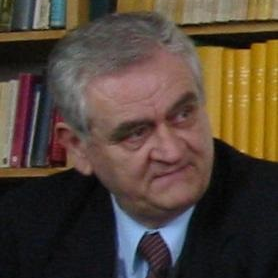State-of-the-Art Materials Science and Engineering Scientific Research—Romanian Technical Science Academy
A special issue of Materials (ISSN 1996-1944). This special issue belongs to the section "Materials Chemistry".
Deadline for manuscript submissions: closed (20 March 2023) | Viewed by 12539
Special Issue Editors
Interests: biomaterials; biodegradable materials; coatings; microstructural analysis; heat treatments
Special Issues, Collections and Topics in MDPI journals
2. Department of Materials Science, “Transylvania” University of Brasov, 500036 Brasov, Romania
Interests: nanomaterials; materials science; composites; ceramics; biomaterials; surface functionalization; testing and characterization of materials; noise and fluctuations applied on materials science; nanotechnologies in heat treatments
Special Issues, Collections and Topics in MDPI journals
Special Issue Information
Dear Colleagues,
We have the pleasure of inviting you to submit a manuscript for the forthcoming Special Issue “State-of-the-Art Materials Science and Engineering Scientific Research—Romanian Technical Science Academy”, for the journal “Materials” ISSN 1996-1944.
The Romanian Academy of Technical Sciences is a forum of excellence that operates on a national and European level, which includes leading figures in the field of engineering, and strives to promote the development of scientific research on a national and global level, as well as technical creation and higher education engineering. The value of the scientific personalities within the Romanian Academy of Technical Sciences stimulates the solution of complex technical problems of a constantly changing society, dominated by the special advances in the fields of science and technology. Materials presents a research challenge in various fields, such as biomedical, security and defence, electronics, aerospace and automotive, mechanical engineering, chemical engineering, electrical engineering, and natural science.
The aim of this Special Issue is to publish selected and original scientific papers written by Romanian scientists, describing research work carried out on materials using the latest technological advancements. As a result, our invitation is to make as many proposals as possible to publish research topics that fall within the broader field of Materials Science and Engineering.
To resume the achievements of recent years in this field, the current Special Issue aims to cover all aspects connected with the synthesis, design, manufacturing, and characterization of advanced materials.
The Special Issue shall publish articles, including, but not limited to, the following topics:
- biocompatible and biodegradable materials;
- surface and interface engineering to improve the materials’ performance;
- functional materials;
- structure-property relationships;
- thermal analysis and heat treatments;
- microstructure characterization;
- the relationship between structure, properties, and materials applications;
- mechanical properties;
- corrosion resistance and electrochemical analysis;
- in vivo and in vitro studies;
- modeling and simulation for additive manufacturing;
- additive manufacturing of advanced materials: metals, ceramics, and polymers;
- polymers used in various applications;
- nanomaterials and their applications.
It is our pleasure to invite you to submit a manuscript for this Special Issue, welcoming full original research papers, communications, and review articles, to be submitted before 20 March 2023.
Prof. Dr. Corneliu Munteanu
Prof. Dr. Cornel Samoilǎ
Prof. Dr. Ioan Vida-Simiti
Guest Editors
Manuscript Submission Information
Manuscripts should be submitted online at www.mdpi.com by registering and logging in to this website. Once you are registered, click here to go to the submission form. Manuscripts can be submitted until the deadline. All submissions that pass pre-check are peer-reviewed. Accepted papers will be published continuously in the journal (as soon as accepted) and will be listed together on the special issue website. Research articles, review articles as well as short communications are invited. For planned papers, a title and short abstract (about 100 words) can be sent to the Editorial Office for announcement on this website.
Submitted manuscripts should not have been published previously, nor be under consideration for publication elsewhere (except conference proceedings papers). All manuscripts are thoroughly refereed through a single-blind peer-review process. A guide for authors and other relevant information for submission of manuscripts is available on the Instructions for Authors page. Materials is an international peer-reviewed open access semimonthly journal published by MDPI.
Please visit the Instructions for Authors page before submitting a manuscript. The Article Processing Charge (APC) for publication in this open access journal is 2600 CHF (Swiss Francs). Submitted papers should be well formatted and use good English. Authors may use MDPI's English editing service prior to publication or during author revisions.
Keywords
- advanced materials
- industrial application
- biomedical applications
- microstructure and mechanical properties
- corrosion resistance
- coatings
- modelling and simulation
- additive manufacturing
- polymers
- nanomaterials and their applications
Benefits of Publishing in a Special Issue
- Ease of navigation: Grouping papers by topic helps scholars navigate broad scope journals more efficiently.
- Greater discoverability: Special Issues support the reach and impact of scientific research. Articles in Special Issues are more discoverable and cited more frequently.
- Expansion of research network: Special Issues facilitate connections among authors, fostering scientific collaborations.
- External promotion: Articles in Special Issues are often promoted through the journal's social media, increasing their visibility.
- e-Book format: Special Issues with more than 10 articles can be published as dedicated e-books, ensuring wide and rapid dissemination.
Further information on MDPI's Special Issue polices can be found here.








